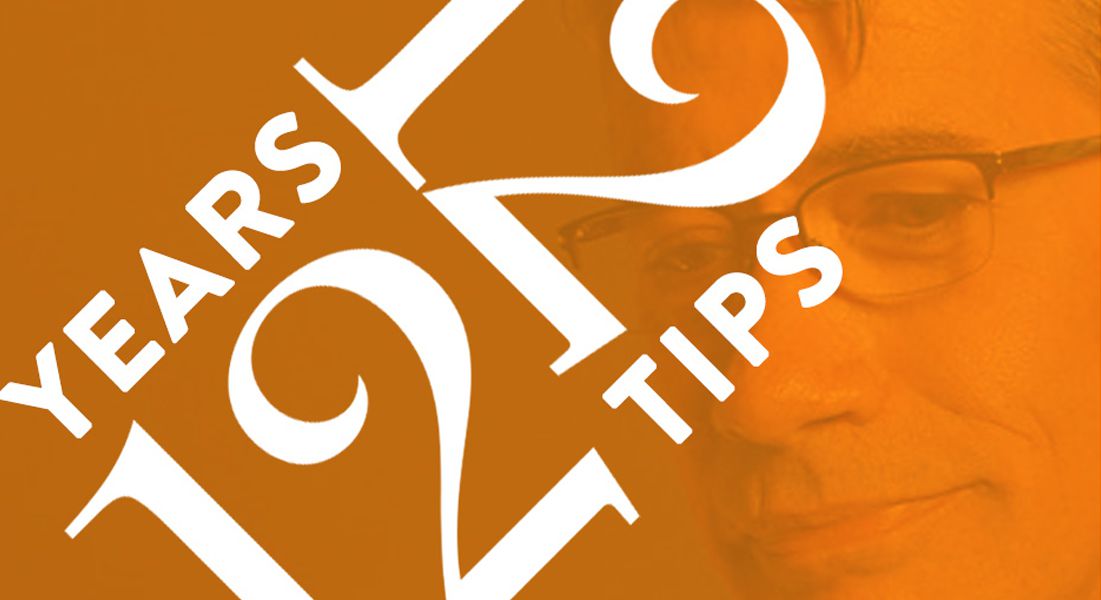12 Indestructible Tips for Surviving and Thriving in Advertising

December 1st marks my 12-year work anniversary at Scheffey. That may not seem like a long time, but in a 37-year (and counting) career, it’s the longest I’ve ever worked at one place. And for someone who went to art school where we learned how to use t-squares on a drawing board, saying the industry has changed a bit doesn’t begin to describe it. It goes without saying, I’ve evolved and learned a lot over the years. And continue to every day. For all the latest technologies and myriad of ways we now reach and interact with our audience, there are just as many things that haven’t changed about being a successful designer in advertising. Here are a few I’ve come to know … or 12, to be precise:
1. You do great work, but you’re not great at everything.
We all have strengths and weaknesses. While it’s good to work on your weak areas, your value comes from what you excel in. It’s not a weakness to rely on others who are stronger than you are in certain areas.
2. Grow an elephant hide.
Not everything you create will be loved by others. Hard to believe, right? You excelled in art school and are experienced in the field, but everyone will have an opinion about your work. Clients. Co-workers. Friends. Colleagues. To a degree, design will always be subjective. Stand up for your work but learn to not take feedback or criticism too personally.
3. Take a hike, meditate or skydive.
Tuning out your passion for great design can be hard to do. But taking a break from your monitor to clear your head (in whatever way works for you) can be the best way to re-energize and re-look at something with a fresh perspective. My way of recharging is getting into nature. Fresh air and a hiking trail not only clears the cobwebs, but when you open your eyes to it, there’s a lot of inspiration to be found in nature’s colors, textures and sounds.
4. Take classes. Engage with peers.
Technologies, programs, and marketing strategies change constantly. Learning on-the-fly might work for some of us, but getting real-world tips from peers and instruction from a class can be a great experience.
5. Don’t be a Debbie-downer.
Being positive is good advice for anyone. But, in an industry of deadlines, stress and constant change, keeping the right attitude will help get you through the day and have a positive impact on the people around you. I think more than anything, maintaining a good perspective is key. Look at scenarios realistically. You won’t be able to conquer all, all the time. Prioritize and ask for help. And if your work’s missed the mark the last two times, know that you’ll rock it on the next one.
6. Don’t present a design option if you’re not in love with it.
We’ve all done it. And if you haven’t, you probably will. You present three designs. You love the one you’re recommending, you have a really strong second choice, you’re so-so with option three. You know the one the client will pick!
7. Become a good juggler.
If you’re lucky enough to stay as busy as I have, you’ll often have a lot of balls in the air. Rush jobs, meetings, emails, phone calls and a host of other new “priorities” are there to test your creativity and concentration.
8. Don’t say no because you haven’t done it before.
Staying in your comfort zone is easy. But taking on a new challenge is a great way to find out if you’ve got a talent that just hasn’t been tapped yet. And while you may not become an expert in everything, a well-rounded knowledge and some practical experience in a variety of areas makes you a more valuable team player.
9. It’s only an awesome design or concept if it works.
You create a killer design. It’s bold. It’s fresh. It feels current. Your peers love it. But if it doesn’t get a click-through, generate a phone call or increase sales, then it didn’t connect with your audience. It didn’t work.
10. Stay current on trends, but don’t let them define you.
Industry trends are constantly shifting and changing. It’s important to stay current with fonts, color, imagery, lifestyle, and tone. But good design practices and each designer’s unique style should still underlie the foundation of their work. Don’t get pulled in to someone else’s design esthetic. Be you.
11. Ask questions. Gather solid input and clear objectives.
Nothing can send a project in the wrong direction like the lack of good input. As visual communicators, the more knowledge we go in with, the better chance we have of being on target. Ask lots of questions.
12. Have fun.
Sure, work is still work. We have a responsibility to our clients to give them great work, exceed their expectations and help their businesses grow. But in the big picture, our “work” allows us to be creative thinkers, and to explore and experiment with colors, fonts, and images. Find fun in it every day.
